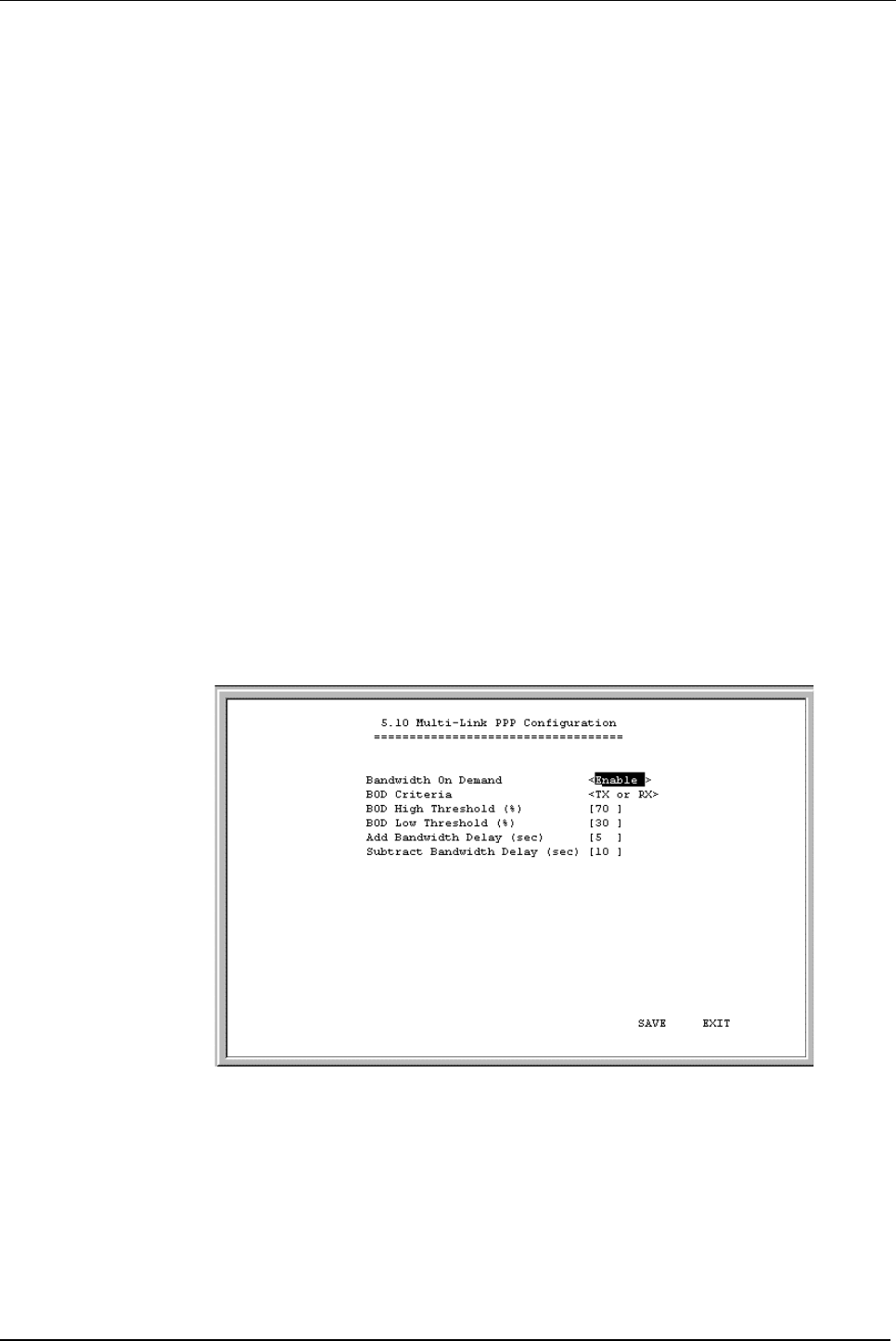
DI-206 ISDN Remote Router
64
of data packets across multiple channels. Although MLPPP can be implemented on
any WAN device, it was the rapid emergence of ISDN BRI as a cost efficient higher
bandwidth alternative to modems which has driven the evolution and acceptance of
MLPPP. Typically MLPPP is used to combine the speed of two ISDN BRI B-
Channels to get 128Kbps of virtual capacity.
Before implementing MLPPP on the DI-206, please ensure that your ISP or the
device to which you are connecting supports, and is configured for MLPPP.
MLPPP can be implemented in two ways, dynamically through the use of the
Bandwidth on Demand (BOD), and statically. BOD causes the second ISDN port to
place a call and add bandwidth to the ISDN connection when the BOD High
Threshold is exceeded for the Add Bandwidth Delay period. Bandwidth can also be
subtracted when ISDN throughput falls below the BOD Low
Threshold and Subtract
Bandwidth Delay parameters. Thus, BOD economizes MLPPP by maintaining only
the bandwidth needed.
A static implementation of MLPPP is achieved when BOD is disabled but the ISDN
ports have Multi-Link enabled. In this case, when the two ISDN ports have
established a connection, the router will check to see if they are connected to the
same source and whether the source supports MLPPP. If both conditions are met, the
router will automatically bundle the two links together as an MLPPP connection.
Choosing
Multi-Link PPP Configuration
displays the following screen:
Items in the
Multi-Link PPP Configuration
window are described as follows:
•
Bandwidth on Demand
– Enables or disables BOD. When enabled, BOD will
manage the implementation of MLPPP using the parameters defined in this
window.
•
BOD Criteria
– Either
TX
,
RX
or
TX+RX
, where
TX
is Transmit and
RX
is
Receive. The parameter defined here is used when monitoring the BOD High
Threshold and BOD Low Threshold.


















